Communication Skills During Blood Glucose Monitoring
VerifiedAdded on 2022/08/26
|8
|908
|36
Presentation
AI Summary
Contribute Materials
Your contribution can guide someone’s learning journey. Share your
documents today.
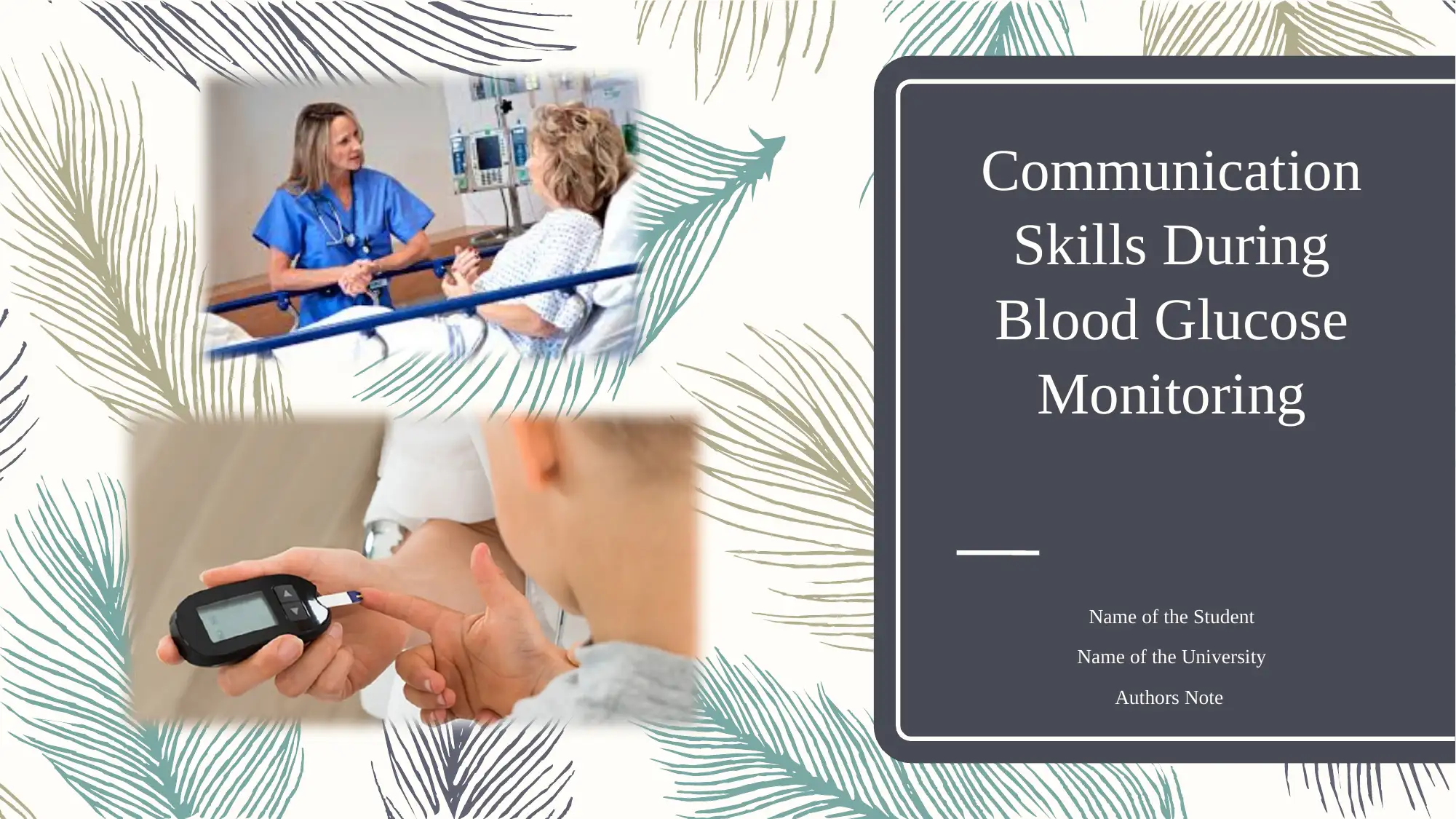
Communication
Skills During
Blood Glucose
Monitoring
Name of the Student
Name of the University
Authors Note
Skills During
Blood Glucose
Monitoring
Name of the Student
Name of the University
Authors Note
Secure Best Marks with AI Grader
Need help grading? Try our AI Grader for instant feedback on your assignments.
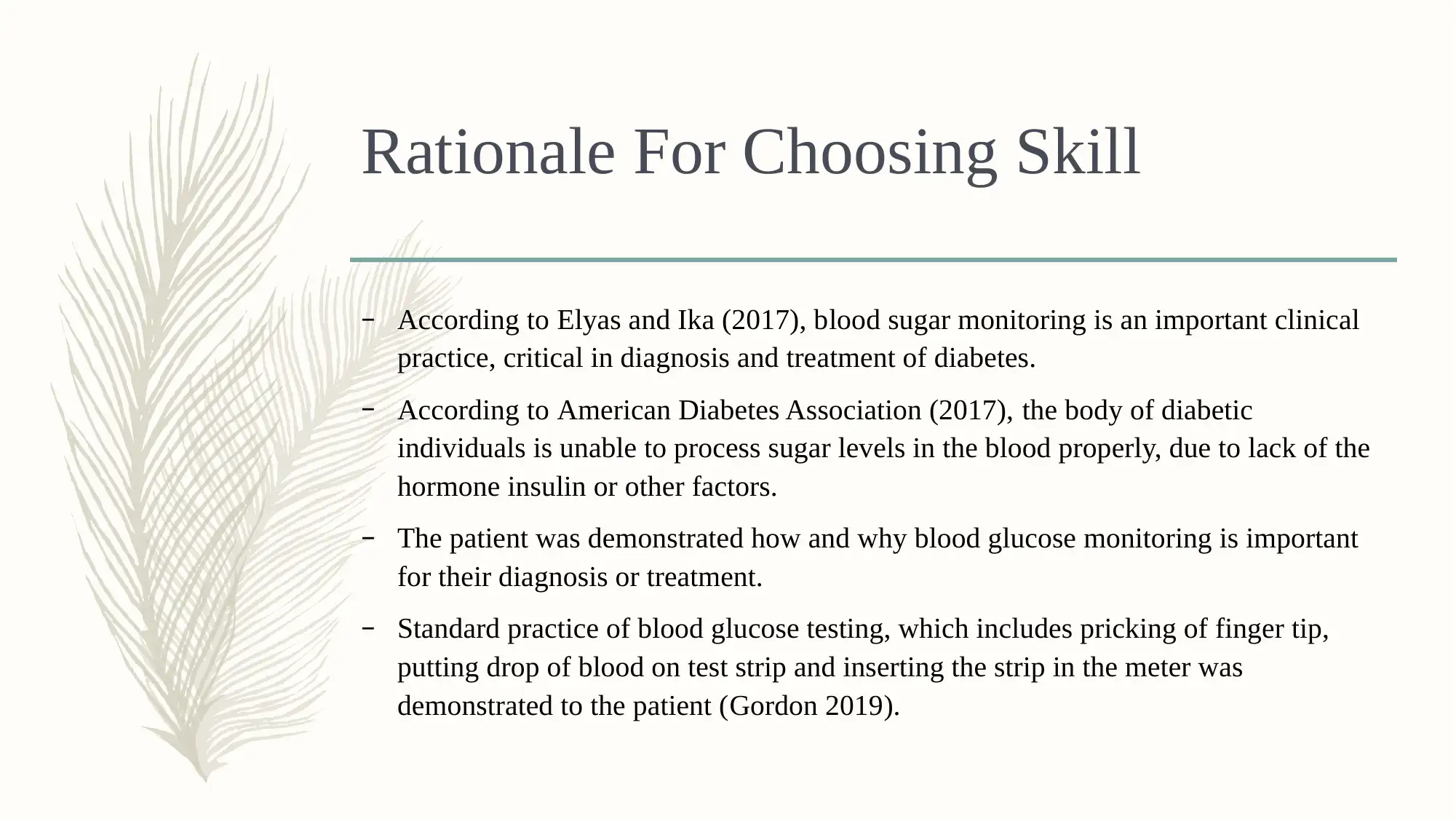
Rationale For Choosing Skill
– According to Elyas and Ika (2017), blood sugar monitoring is an important clinical
practice, critical in diagnosis and treatment of diabetes.
– According to American Diabetes Association (2017), the body of diabetic
individuals is unable to process sugar levels in the blood properly, due to lack of the
hormone insulin or other factors.
– The patient was demonstrated how and why blood glucose monitoring is important
for their diagnosis or treatment.
– Standard practice of blood glucose testing, which includes pricking of finger tip,
putting drop of blood on test strip and inserting the strip in the meter was
demonstrated to the patient (Gordon 2019).
– According to Elyas and Ika (2017), blood sugar monitoring is an important clinical
practice, critical in diagnosis and treatment of diabetes.
– According to American Diabetes Association (2017), the body of diabetic
individuals is unable to process sugar levels in the blood properly, due to lack of the
hormone insulin or other factors.
– The patient was demonstrated how and why blood glucose monitoring is important
for their diagnosis or treatment.
– Standard practice of blood glucose testing, which includes pricking of finger tip,
putting drop of blood on test strip and inserting the strip in the meter was
demonstrated to the patient (Gordon 2019).
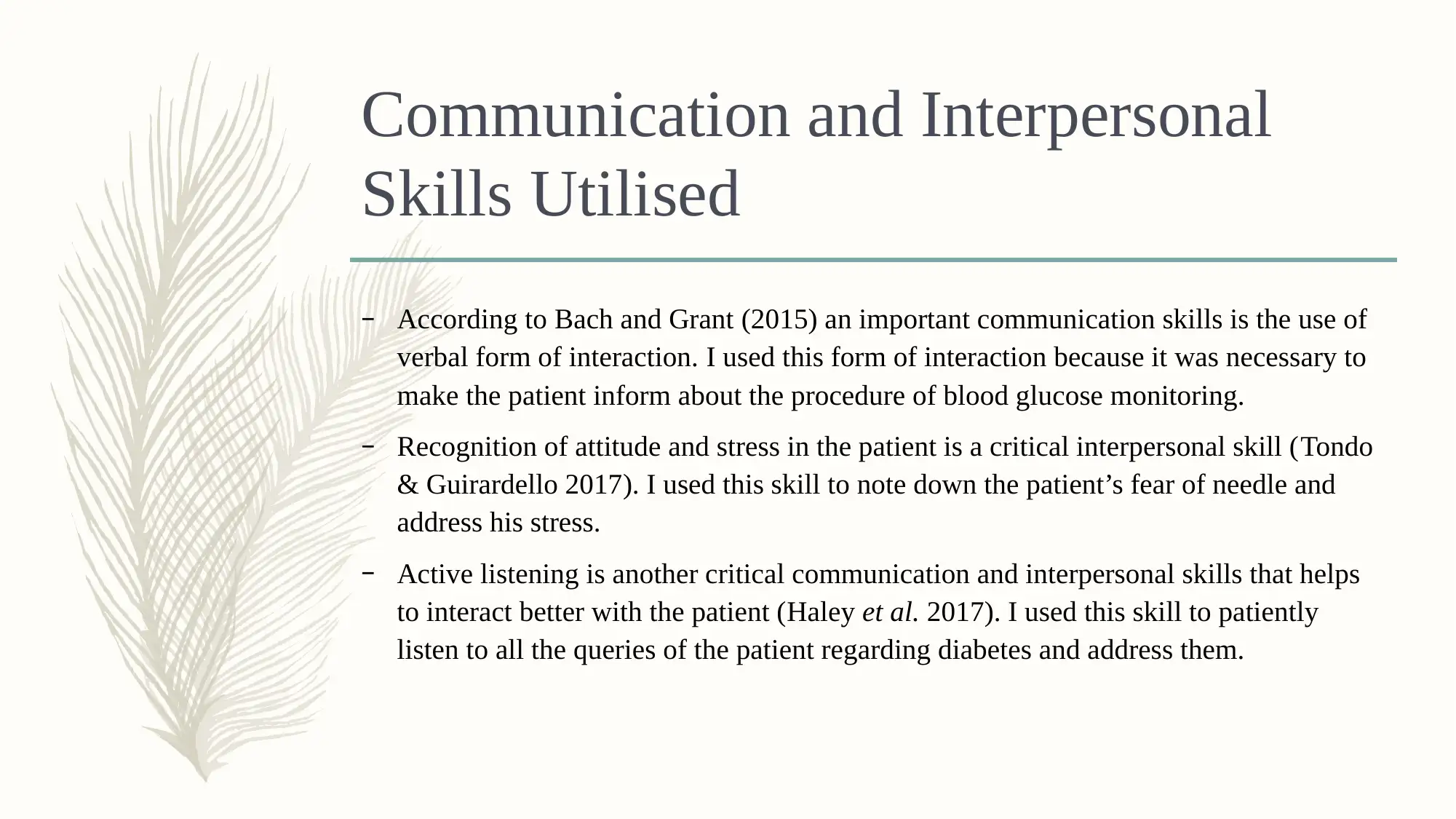
Communication and Interpersonal
Skills Utilised
– According to Bach and Grant (2015) an important communication skills is the use of
verbal form of interaction. I used this form of interaction because it was necessary to
make the patient inform about the procedure of blood glucose monitoring.
– Recognition of attitude and stress in the patient is a critical interpersonal skill (Tondo
& Guirardello 2017). I used this skill to note down the patient’s fear of needle and
address his stress.
– Active listening is another critical communication and interpersonal skills that helps
to interact better with the patient (Haley et al. 2017). I used this skill to patiently
listen to all the queries of the patient regarding diabetes and address them.
Skills Utilised
– According to Bach and Grant (2015) an important communication skills is the use of
verbal form of interaction. I used this form of interaction because it was necessary to
make the patient inform about the procedure of blood glucose monitoring.
– Recognition of attitude and stress in the patient is a critical interpersonal skill (Tondo
& Guirardello 2017). I used this skill to note down the patient’s fear of needle and
address his stress.
– Active listening is another critical communication and interpersonal skills that helps
to interact better with the patient (Haley et al. 2017). I used this skill to patiently
listen to all the queries of the patient regarding diabetes and address them.
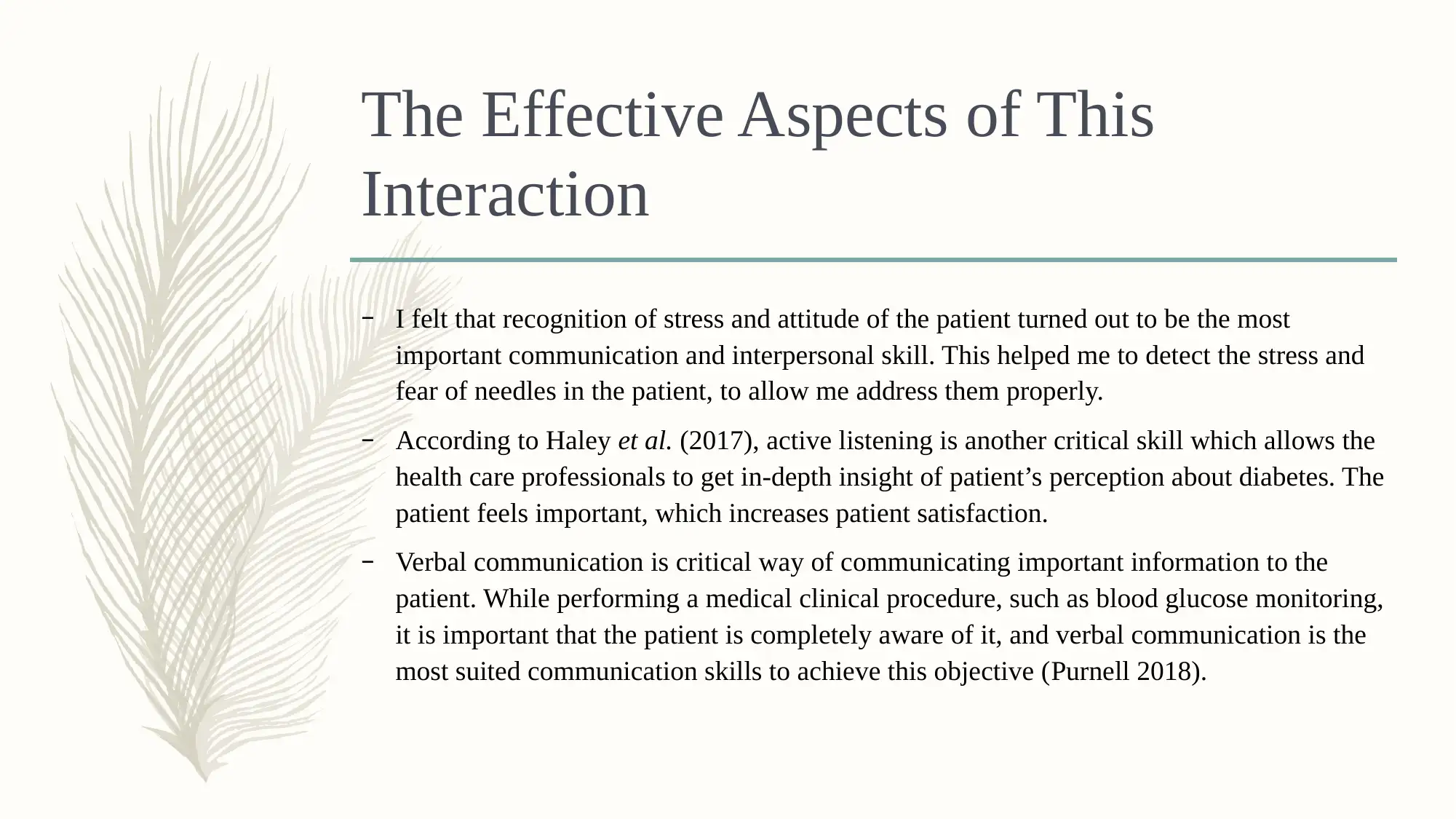
The Effective Aspects of This
Interaction
– I felt that recognition of stress and attitude of the patient turned out to be the most
important communication and interpersonal skill. This helped me to detect the stress and
fear of needles in the patient, to allow me address them properly.
– According to Haley et al. (2017), active listening is another critical skill which allows the
health care professionals to get in-depth insight of patient’s perception about diabetes. The
patient feels important, which increases patient satisfaction.
– Verbal communication is critical way of communicating important information to the
patient. While performing a medical clinical procedure, such as blood glucose monitoring,
it is important that the patient is completely aware of it, and verbal communication is the
most suited communication skills to achieve this objective (Purnell 2018).
Interaction
– I felt that recognition of stress and attitude of the patient turned out to be the most
important communication and interpersonal skill. This helped me to detect the stress and
fear of needles in the patient, to allow me address them properly.
– According to Haley et al. (2017), active listening is another critical skill which allows the
health care professionals to get in-depth insight of patient’s perception about diabetes. The
patient feels important, which increases patient satisfaction.
– Verbal communication is critical way of communicating important information to the
patient. While performing a medical clinical procedure, such as blood glucose monitoring,
it is important that the patient is completely aware of it, and verbal communication is the
most suited communication skills to achieve this objective (Purnell 2018).
Secure Best Marks with AI Grader
Need help grading? Try our AI Grader for instant feedback on your assignments.
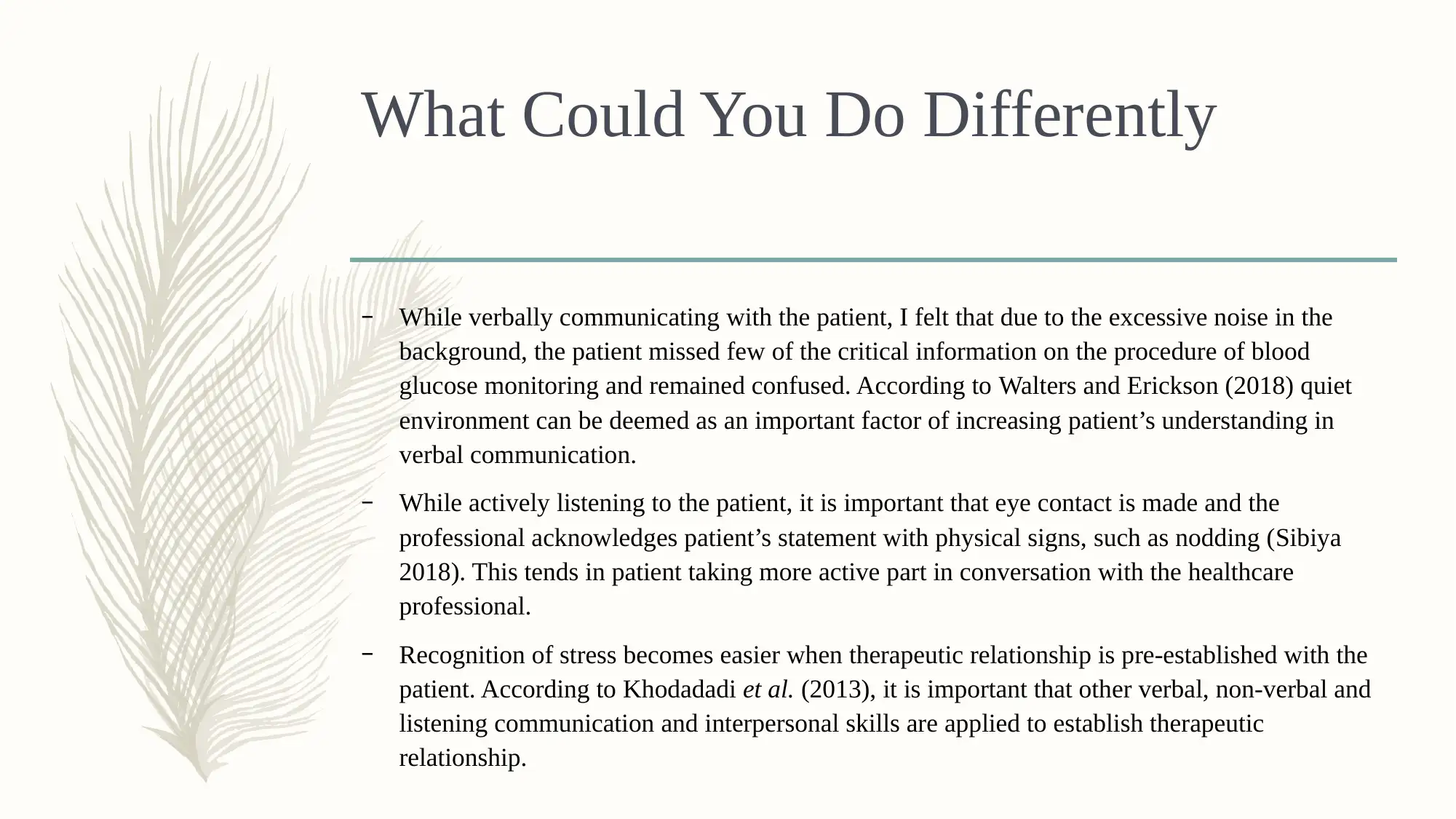
What Could You Do Differently
– While verbally communicating with the patient, I felt that due to the excessive noise in the
background, the patient missed few of the critical information on the procedure of blood
glucose monitoring and remained confused. According to Walters and Erickson (2018) quiet
environment can be deemed as an important factor of increasing patient’s understanding in
verbal communication.
– While actively listening to the patient, it is important that eye contact is made and the
professional acknowledges patient’s statement with physical signs, such as nodding (Sibiya
2018). This tends in patient taking more active part in conversation with the healthcare
professional.
– Recognition of stress becomes easier when therapeutic relationship is pre-established with the
patient. According to Khodadadi et al. (2013), it is important that other verbal, non-verbal and
listening communication and interpersonal skills are applied to establish therapeutic
relationship.
– While verbally communicating with the patient, I felt that due to the excessive noise in the
background, the patient missed few of the critical information on the procedure of blood
glucose monitoring and remained confused. According to Walters and Erickson (2018) quiet
environment can be deemed as an important factor of increasing patient’s understanding in
verbal communication.
– While actively listening to the patient, it is important that eye contact is made and the
professional acknowledges patient’s statement with physical signs, such as nodding (Sibiya
2018). This tends in patient taking more active part in conversation with the healthcare
professional.
– Recognition of stress becomes easier when therapeutic relationship is pre-established with the
patient. According to Khodadadi et al. (2013), it is important that other verbal, non-verbal and
listening communication and interpersonal skills are applied to establish therapeutic
relationship.
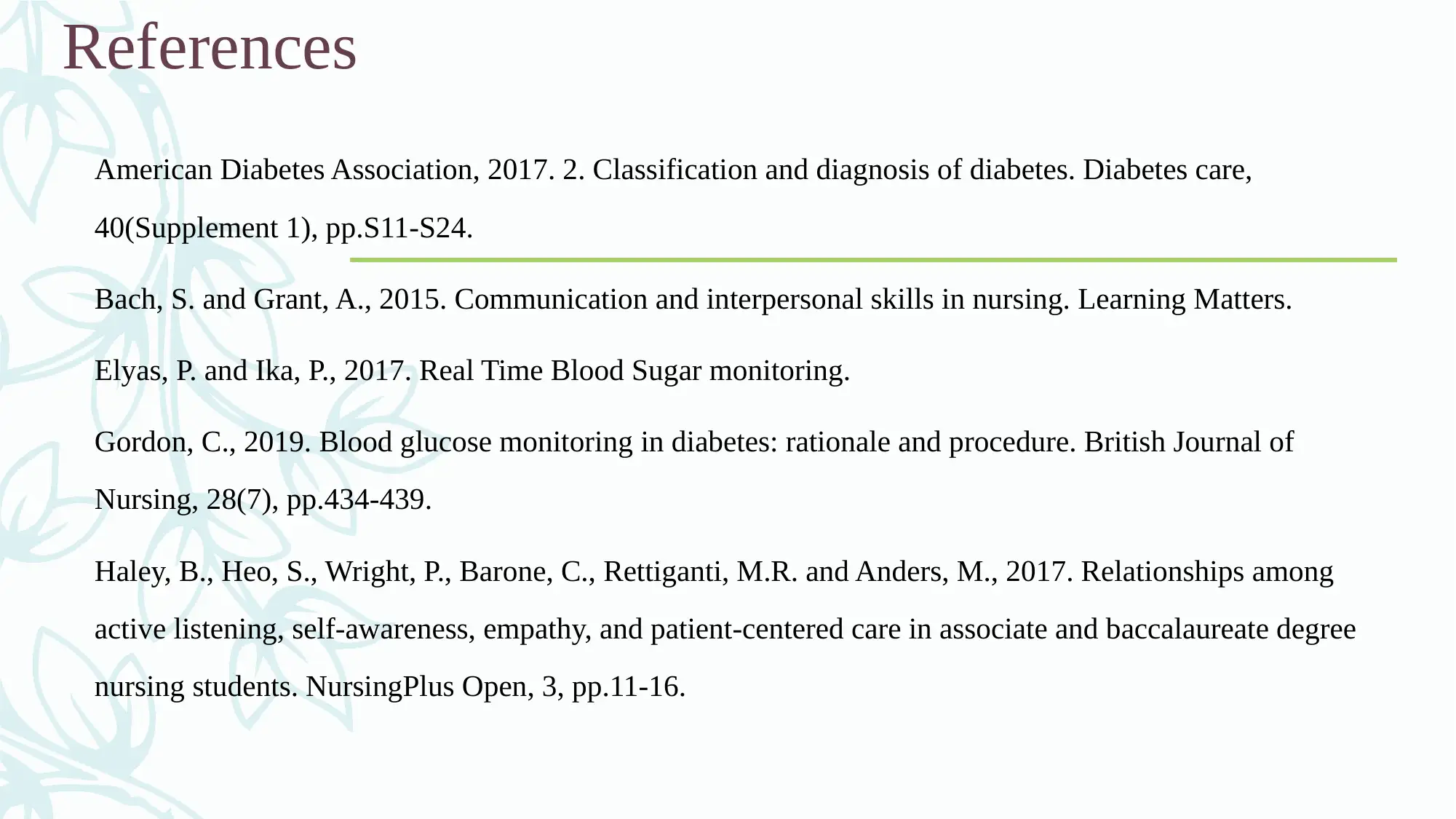
References
American Diabetes Association, 2017. 2. Classification and diagnosis of diabetes. Diabetes care,
40(Supplement 1), pp.S11-S24.
Bach, S. and Grant, A., 2015. Communication and interpersonal skills in nursing. Learning Matters.
Elyas, P. and Ika, P., 2017. Real Time Blood Sugar monitoring.
Gordon, C., 2019. Blood glucose monitoring in diabetes: rationale and procedure. British Journal of
Nursing, 28(7), pp.434-439.
Haley, B., Heo, S., Wright, P., Barone, C., Rettiganti, M.R. and Anders, M., 2017. Relationships among
active listening, self-awareness, empathy, and patient-centered care in associate and baccalaureate degree
nursing students. NursingPlus Open, 3, pp.11-16.
American Diabetes Association, 2017. 2. Classification and diagnosis of diabetes. Diabetes care,
40(Supplement 1), pp.S11-S24.
Bach, S. and Grant, A., 2015. Communication and interpersonal skills in nursing. Learning Matters.
Elyas, P. and Ika, P., 2017. Real Time Blood Sugar monitoring.
Gordon, C., 2019. Blood glucose monitoring in diabetes: rationale and procedure. British Journal of
Nursing, 28(7), pp.434-439.
Haley, B., Heo, S., Wright, P., Barone, C., Rettiganti, M.R. and Anders, M., 2017. Relationships among
active listening, self-awareness, empathy, and patient-centered care in associate and baccalaureate degree
nursing students. NursingPlus Open, 3, pp.11-16.
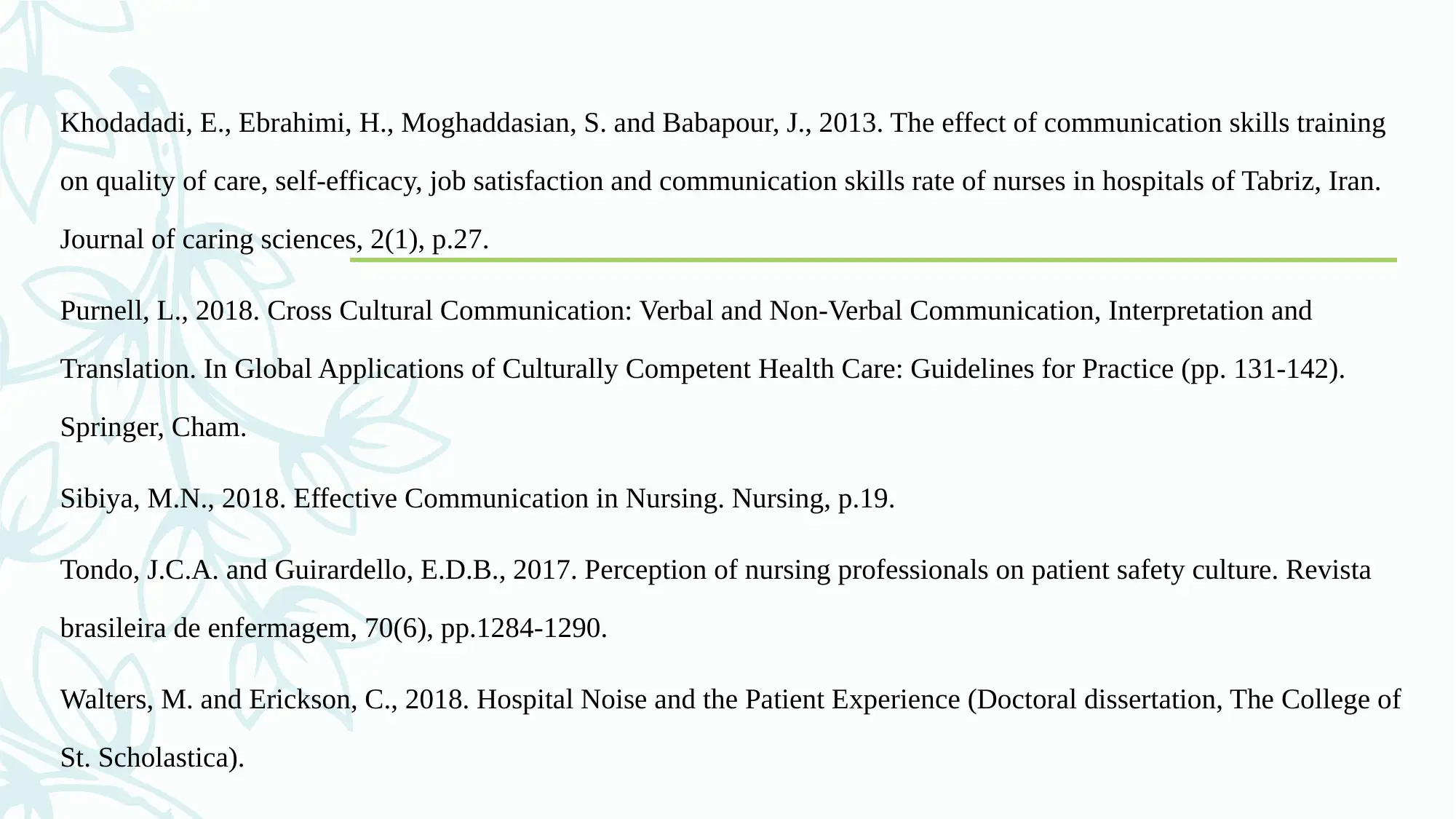
Khodadadi, E., Ebrahimi, H., Moghaddasian, S. and Babapour, J., 2013. The effect of communication skills training
on quality of care, self-efficacy, job satisfaction and communication skills rate of nurses in hospitals of Tabriz, Iran.
Journal of caring sciences, 2(1), p.27.
Purnell, L., 2018. Cross Cultural Communication: Verbal and Non-Verbal Communication, Interpretation and
Translation. In Global Applications of Culturally Competent Health Care: Guidelines for Practice (pp. 131-142).
Springer, Cham.
Sibiya, M.N., 2018. Effective Communication in Nursing. Nursing, p.19.
Tondo, J.C.A. and Guirardello, E.D.B., 2017. Perception of nursing professionals on patient safety culture. Revista
brasileira de enfermagem, 70(6), pp.1284-1290.
Walters, M. and Erickson, C., 2018. Hospital Noise and the Patient Experience (Doctoral dissertation, The College of
St. Scholastica).
on quality of care, self-efficacy, job satisfaction and communication skills rate of nurses in hospitals of Tabriz, Iran.
Journal of caring sciences, 2(1), p.27.
Purnell, L., 2018. Cross Cultural Communication: Verbal and Non-Verbal Communication, Interpretation and
Translation. In Global Applications of Culturally Competent Health Care: Guidelines for Practice (pp. 131-142).
Springer, Cham.
Sibiya, M.N., 2018. Effective Communication in Nursing. Nursing, p.19.
Tondo, J.C.A. and Guirardello, E.D.B., 2017. Perception of nursing professionals on patient safety culture. Revista
brasileira de enfermagem, 70(6), pp.1284-1290.
Walters, M. and Erickson, C., 2018. Hospital Noise and the Patient Experience (Doctoral dissertation, The College of
St. Scholastica).
Paraphrase This Document
Need a fresh take? Get an instant paraphrase of this document with our AI Paraphraser
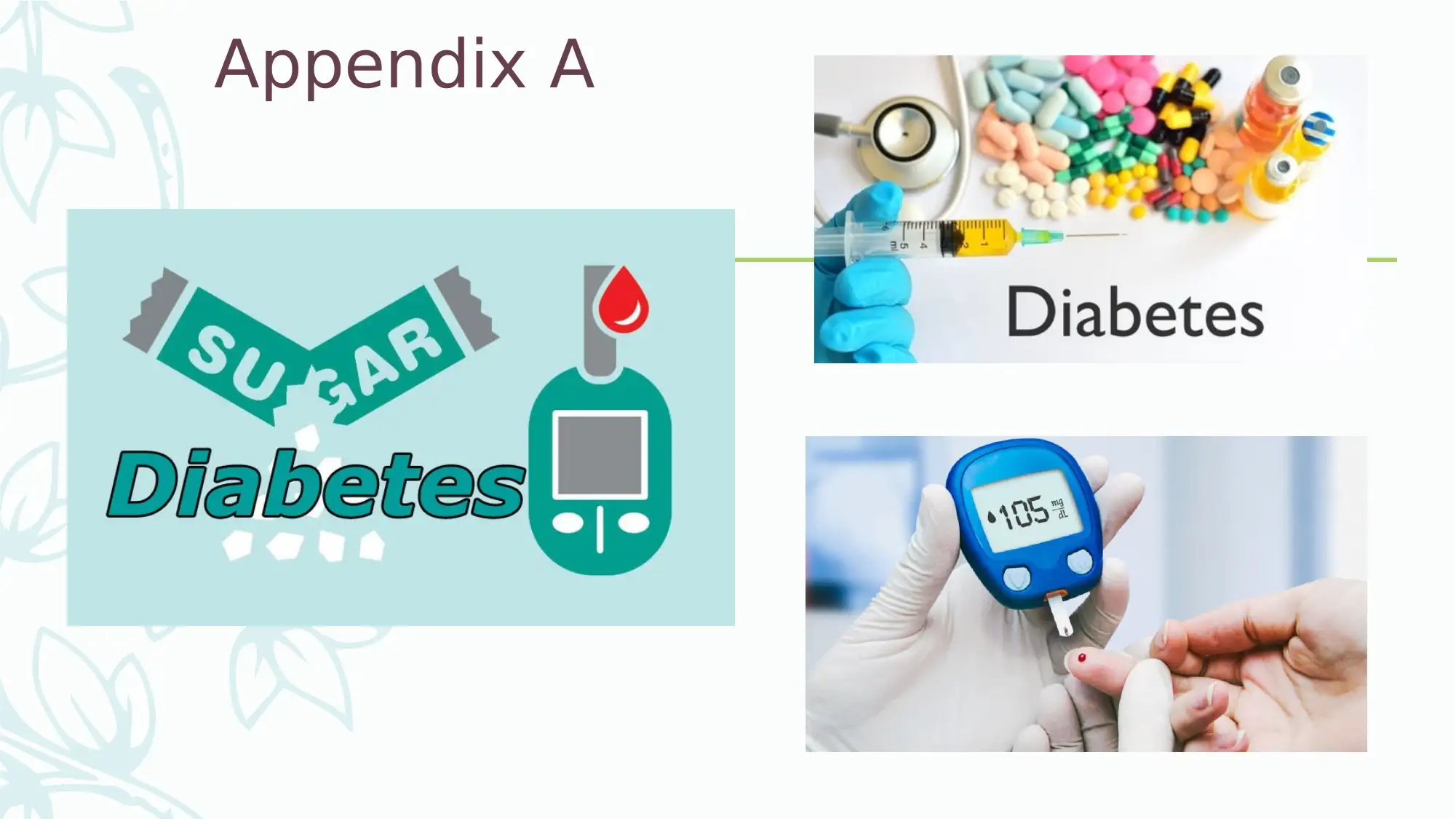
Appendix A
1 out of 8
Related Documents
Your All-in-One AI-Powered Toolkit for Academic Success.
+13062052269
info@desklib.com
Available 24*7 on WhatsApp / Email
![[object Object]](/_next/static/media/star-bottom.7253800d.svg)
Unlock your academic potential
© 2024 | Zucol Services PVT LTD | All rights reserved.




